Featured image credit: Omgivning
Perhaps as a deeply inadequate escape from the stresses of the first World War, hot chocolate was all the rage in Los Angeles in 1914. Through this fad, new life was etched into the very walls of a formerly non-descript four-story building that remains standing today at 217 West 6th Street. While the fragrance of melted chocolate blew away decades ago, the elaborate tiles characterizing the chocolate shop Los Angeles insiders celebrate are still there. You just need to know the right person to catch a glimpse. Today, we look at the briefly sweet history of Downtown LA’s Dutch Chocolate Shoppe.
A Downtown LA Chocolate Shop with Character
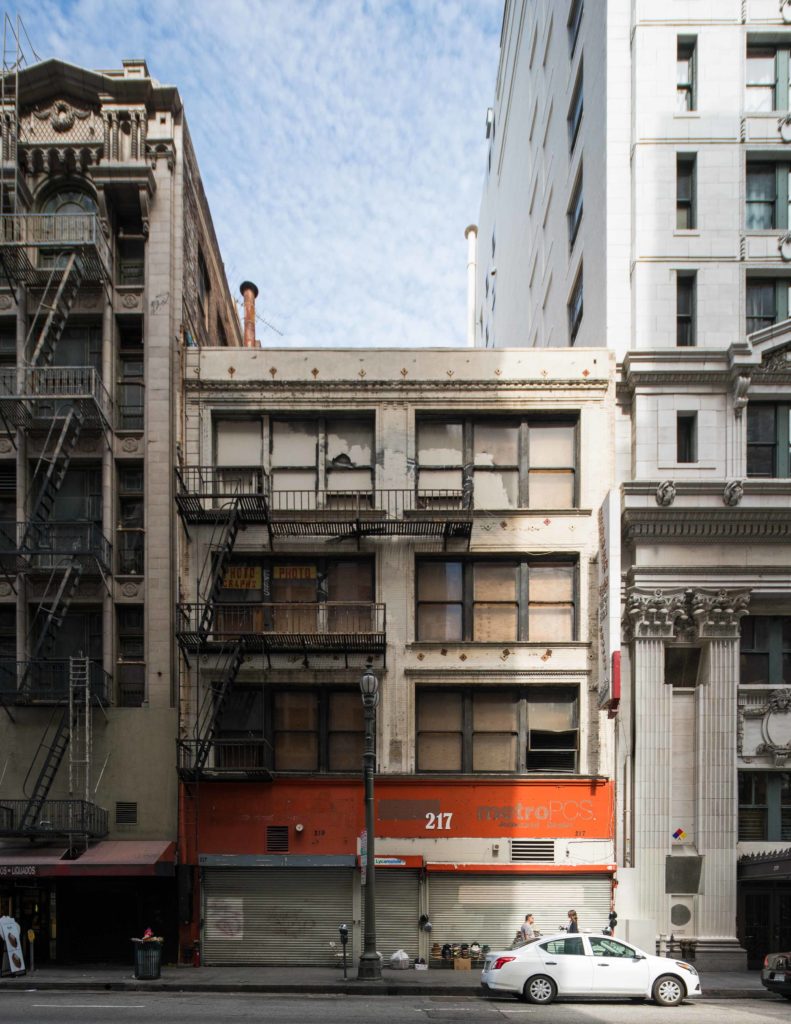
The building that houses the remains of the Dutch Chocolate Shoppe was originally constructed in 1898 by one Gerhard Eshman based on designs by noted architecture firm Morgan and Walls. But it wouldn’t become the chocolate shop Los Angeles history buffs recognize until 1914.
At that time, the bottom floor was purchased with the intention of making it the fourth in the budding Petitfils Chocolate Shoppe chain, overseen at the time by E.C. Quinby and P.W. Petitfils. But while most chains these days adhere to a stale uniformity, the businessmen wanted something unique for their Downtown Los Angeles location. Setting aside a considerable sum of money for the time, they turned to architecture firm Plummer and Feil to bring something reminiscent of the “Old World” to life.
They wasted no time in involving local artist Ernest Batchelder. With the chocolate shop being one of his earliest commissioned jobs, he had yet to establish himself as the icon he’s known as today. Yet Plummer and Feil recognized his talent and how it would play perfectly into Quinby and Petitfils’ vision.
An Auspicious Beginning for Ernest Batchelder
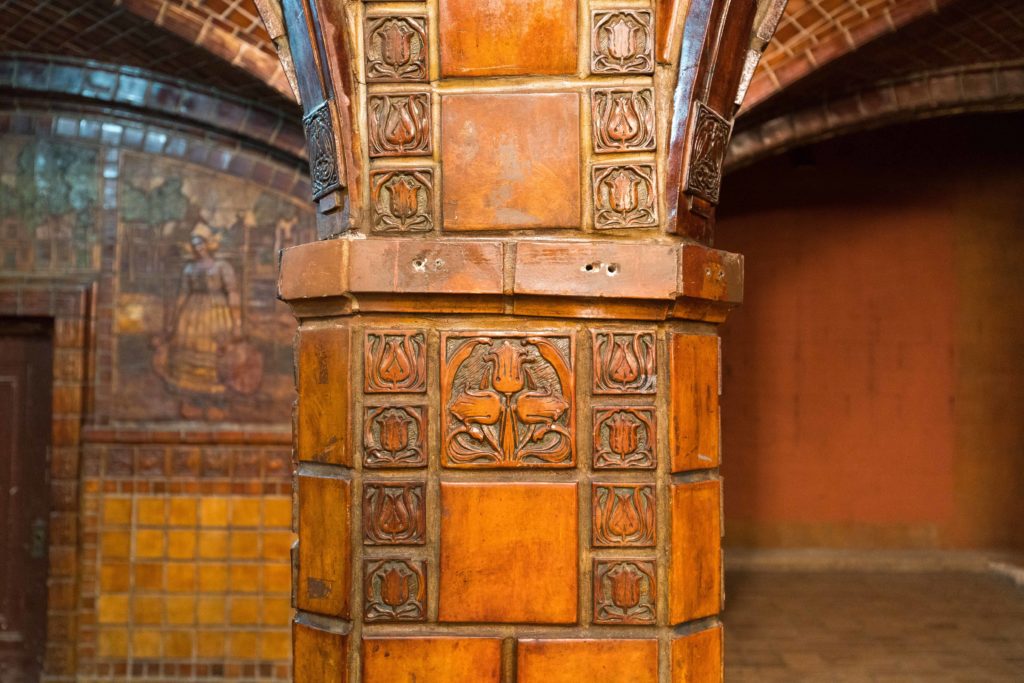
Batchelder sought inspiration in the German bierstubes (or beer halls) of old. Across 21 scenes meticulously carved in bas-relief murals, the talented tile craftsman created vivacious vignettes of medieval Dutch life. Farmers till fields and old wives knit garments while schooners brave waves and windmills seem to move in wood-locked breezes. Twin sentries stand opposite one another, playfully blowing bubbles poised to break in eternal anticipation. An entire society is frozen in time on the maple walls of the cavernous room.
Batchelder’s ornate tiles and bas-reliefs far outlived the public’s lust for hot chocolate. By the mid-1920s, the Chocolate Shop chain had melted away into sweet memories. But Batchelder’s star was still rising.
Though he would go on to be recognized as a leader of America’s Arts and Crafts movement, Batchelder’s initial draw, besides his obvious talent, was his affordability. Because of this, you can find his distinctive tiles adorning fireplaces and fountains across Southern California and even the country as a whole. In the days that the artist spent working on the chocolate shop, he actually fired each tile from his backyard in Pasadena. To this day, fans of his art make pilgrimages to the downtown chocolate shop Los Angeles historians consider one of the most massive surviving collections of his work.
The Interim Years of the Chocolate Shop Los Angeles Businesses Frequented
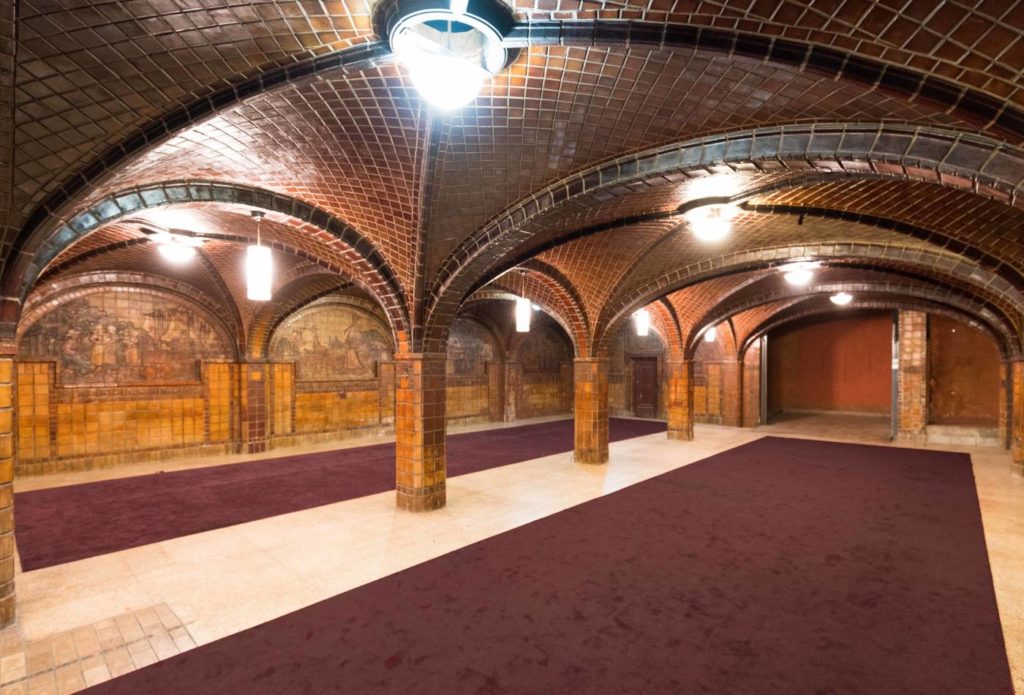
In the decades following the closure of the Chocolate Shop, the space saw a revolving door of tenants while the decor stayed largely the same. By 1927, it was the Health Cafeteria, an early take on health food restaurants. Until the mid-1980s, it was landmark restaurant Finney’s Cafeteria. For a period, it was even the hosting site for a swap meet.
Businesses came and went under the unblinking eyes of Batchelder’s Dutch folk. Their presence was further insulated in 1975 when officials elevated the Dutch Chocolate Shoppe (as the locals have settled into calling it) to Historic Cultural Monument #137.
A Tough Sale
But the former chocolate shop Los Angeles art lovers revere is actually for sale at this moment. In fact, the entire building at 217 West 6th Street has been on the market for some time. Why no takers for this one-of-a-kind space? Because it comes with expenses that add significantly to the initial price tag. In 2019, the Los Angeles Times reported these estimated expenses at around $6 million. With inflation and the rising costs of building materials, those costs have no doubt ballooned dramatically over the interim years.
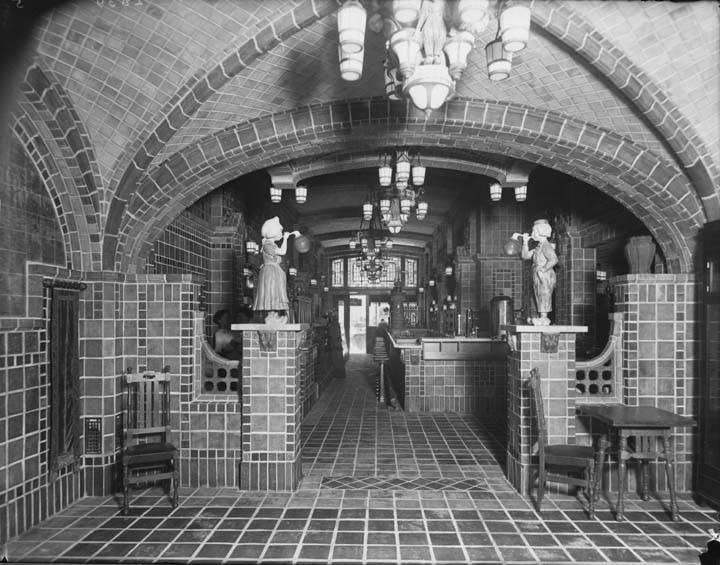
Part of this lofty expense is the direct result of a feud that occurred between the building’s owner in the mid-1980s and the owner of the arcade that was erected behind the building in the 1920s. Originally, 217 West 6th Street had a back exit. While the construction of the arcade would block the exit, architects worked a passage into the arcade so that an exit effectively remained. But when tensions reached their boiling point in the 1980s, the passage between the Dutch Chocolate Shoppe and the arcade was bricked up. It’s an obvious “no no” in modern fire safety codes; one the new owner would need to address.
Bringing a Historic Building Into the Modern Era
Since that Los Angeles Times report, the chocolate shop Los Angeles historians adore has been the subject of some renovation. The undisclosed current owner has done work toward preserving Batchelder’s work, the hallmark of the Dutch Chocolate Shoppe. They’ve also made efforts to bring the building closer to current safety codes.
Some of the renovations extend beyond the former chocolate shop on the ground floor. The upper floors, including a 1930s fringe medical office untouched for decades, feature windows that were bricked over as part of an earthquake retrofit. The current owner is exploring ways to reopen these windows in a bid to attract potential buyers.
Where Have You Seen the Dutch Chocolate Shoppe Before?
For now, the Dutch Chocolate Shoppe coasts onward as a popular shooting location for film, television, commercials and even music videos. Eagle-eyed media mavens may recognize the eccentric location serving as the backdrop for such productions as:
- “Bad Blood” (Taylor Swift music video)
- “Castle” (television episode)
- F9: The Fast Saga (feature film)
- “The Good Place” (television episode)
- The Hunter (feature film)
This is actually nothing new for the chocolate shop Los Angeles location scouters cherish. It appeared on film as early as 1918’s silent dramedy The Hope Chest!
How to See the Chocolate Shop Los Angeles Historians Revere
There are numerous photos of Batchelder’s work for the Dutch Chocolate Shoppe online, but they don’t compare to seeing the work for yourself. Unfortunately, getting into the building is easier said than done. However, there are ways if you time it just right. And have 50 dollars burning a hole in your bank account.
Esotouric, a tour group exploring some of the city’s most unusual locations, has been granted access to the Dutch Chocolate Shoppe. The upcoming tour takes place on March 16, 2024 and is filling up quickly. In fact, the remaining spots may already be gone by the time you read this.
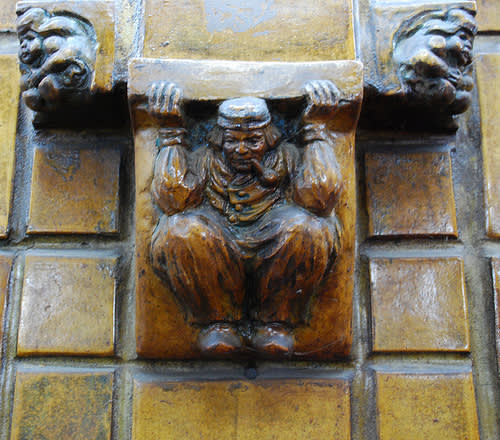
The tour doesn’t just get you up close with Batchelder’s intricate work. You’ll explore 217 West 6th Street in its entirety. And the Esotouric staff will be onhand to explain the historical significance and stories behind the building’s mysteries. Esotouric’s founders Kim Cooper and Richard Schave are actually themselves part of the Dutch Chocolate Shoppe’s history. They assisted in tracking down and moving a lost tile mural from the building to the Pasadena Museum of History. This mural featured in their 2017 exhibit “Batchelder: Tilemaker.”
If you don’t make it into the Esotouric tour, you may be waiting a
while to see the chocolate shop Los Angeles historians celebrate so
fervently. We have faith that a buyer will come forth eventually. But
until then, one of the most brilliant collections of the Arts and Crafts
movement will remain in shadowed obscurity.

Comments
Post a Comment